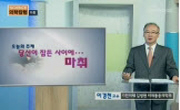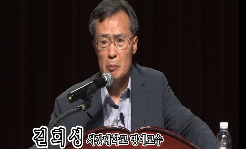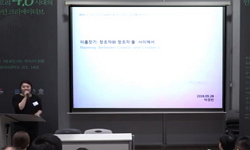본 연구의 목적은 ``동이(東夷)``의 춤으로 알려진 ``지모무``에 대하여 고찰하는것이다. 과연 ``지모무``가 고조선에서 실제로 추어졌던 춤 종목인지, 이 춤은 중국에서 왜 추었는지에 대해 구...
http://chineseinput.net/에서 pinyin(병음)방식으로 중국어를 변환할 수 있습니다.
변환된 중국어를 복사하여 사용하시면 됩니다.
- 中文 을 입력하시려면 zhongwen을 입력하시고 space를누르시면됩니다.
- 北京 을 입력하시려면 beijing을 입력하시고 space를 누르시면 됩니다.
https://www.riss.kr/link?id=A99838832
- 저자
- 발행기관
- 학술지명
- 권호사항
-
발행연도
2013
-
작성언어
Korean
- 주제어
-
등재정보
KCI등재
-
자료형태
학술저널
-
수록면
233-263(31쪽)
- DOI식별코드
- 제공처
-
0
상세조회 -
0
다운로드
부가정보
국문 초록 (Abstract)
본 연구의 목적은 ``동이(東夷)``의 춤으로 알려진 ``지모무``에 대하여 고찰하는것이다. 과연 ``지모무``가 고조선에서 실제로 추어졌던 춤 종목인지, 이 춤은 중국에서 왜 추었는지에 대해 구체적으로 이해하고자 사료를 비교 검토하였다. 1974년에 초판 된 성경린의 『한국의 무용』이라는 교재 이후, 한국무용사학계에서는 ``지모무``라는 용어를 고조선에서 추어졌던 춤의 명칭으로 사용하기 시작하여 현재까지 한민족(韓民族)의 상고시대 춤 종목이라고 소개하고 있다. 심지어고조선에서 중국에 전달한 춤이라는 자민족 중심의 우월적 가치를 부여하기도한다. 본 연구 결과 "東夷之樂, 持矛舞, 助時生也."라는 서술적 문장 속에서 ``지모무``는 춤의 명칭이 아님을 확인하였다. ``지모무``의 공식 명칭은 <매(?, 昧)>이다. 중국 고문헌에 기술된 ``동이지악(東夷之樂)`` <매(?, 昧)>는 ??예기(禮記)?? ?명당위(明堂位)?를 근거로 주공(周公)을 제사지낼 때 <대하(大夏)>와 <대무(大武)>,남만지악(南蠻之樂)인 <임(任)>까지 네 가지를 함께 공연하던 종목이었다. 주공의 봉지(封地)인 노국(魯國)이 중국 땅 동쪽 산동성(山東省)에 위치하고, 중국 주(周)나라의 힘이 중앙으로부터 사방으로까지 널리 미침을 나타내려는 상징적 춤이었다. 그러므로 중국 고문헌에서 볼 수 있는 ``지모무``는 중국 고대의 중화(中華) 사상을 표현하는 춤의 양식(樣式)일 뿐 고조선과는 무관한 춤이라는 것이 본 연구의 결론이다. 중국 상고시대 관련 문헌에서 ``사이(四夷)``는 본래 중국 왕성(王城)을 둘러싼경기(京畿)로부터 1500리∼2000리에 위치한 지역과 그 안에 사는 사람들을 지칭하였고, 동이(東夷)는 네 방위(方位) 중 동쪽 일대를 뜻하는 통념적 용어이다. 그래서 고대의 중국인들은 ``이(夷)``는 인(仁)이며, 인(人)이고, 또한 ``사람다운 사람``, ``군자(君子)`` 내지는 ``군자국(君子國)``을 나타내는 의미로도 사용해 왔을 것이다. 한국 고대사회에 대한 문헌자료가 절대 부족한 상황에서 무분별하게 전거를 해석하고 수용하며 정립하는 일은 연구 방법에서 지양해야할 것이다.
다국어 초록 (Multilingual Abstract)
The purpose of this study is to investigate the ``Jimomoo`` known as a dance of ``Dongyi (東夷)``. We compared historical data to understand in detail, whether the ``Jimomoo`` is actually a dance that was danced in the Gochosun, and why this dance w...
The purpose of this study is to investigate the ``Jimomoo`` known as a dance of ``Dongyi (東夷)``. We compared historical data to understand in detail, whether the ``Jimomoo`` is actually a dance that was danced in the Gochosun, and why this dance was performed in China. In Korean Dance History, since the first edition of Dance in Korea written by Sung, Kyeongrin and published in 1974, the term, ``Jimomoo`` has been used as a dance that was danced in Gochosun and until now it has been introduced as a dance of Korean people (韓民族) in ancient times. Some scholars even add value of superiority by insisting that the dance was delivered to China by Gochosun. As a result of this study it was confirmed that ``Jimomoo`` is not the name of the dance in this descriptive sentence, "東夷之樂, 持矛舞, 助時生 也." The official name of ``Jimomoo`` is <Mea (?, 昧)>. Mea, the ``Dongijiak (東夷之樂)`` described in Chinese old documents was one of the four dances performed when offering the sacrifice to the Zhou Gong (周公), based on Ming Tang wei (明堂位) of Liji (禮記: The book of rites). It was danced together with the other three dances <Da Xia (大夏)>, <Da Wu (大 武)>, and <Ren (任)> of Nammanjiyak (南蠻之樂). It was a symbolic dance to show that the power of Zhou (周) reaches widely in all directions. Therefore, the ``Jimomu`` described in old Chinese documents is just a dance form to express the idea of ancient China (中華) and it has nothing to do with Gochosun. In the literature related to the Chinese ancient times, ``Sayi (四夷)`` meant the region 40-50 miles in four directions form the King`s castle (王城) and the people who live there. Dongyi (東夷) is a common term meaning eastern area among the four. Therefore, the ancient Chinese people would have used ``Yi (夷)`` same as ``perfect virtue (仁)``, ``person(人)``, ``person worthy of the name``, ``a perfect men (君子)`` and as the meaning of ``country of perfect men (君子.)``. Indiscrete interpretation of the written materials on ancient Korea and establishing theories on it should be avoided.
동일학술지(권/호) 다른 논문
-
한국 전통춤의 분류와 양식적 특징 -정병호의 분류법 검토를 중심으로-
- 한국공연문화학회(구 한국고전희곡학회)
- 이병옥 ( Byoung Ok Lee )
- 2013
- KCI등재
-
- 한국공연문화학회(구 한국고전희곡학회)
- 김지원 ( Ji Won Kim )
- 2013
- KCI등재
-
<봉래의> 치화평 사방회무 춤의 양식화를 위한 방안모색
- 한국공연문화학회(구 한국고전희곡학회)
- 손선숙 ( Seon Suk Son )
- 2013
- KCI등재
-
- 한국공연문화학회(구 한국고전희곡학회)
- 이명구 ( Myoung Goo Lee )
- 2013
- KCI등재





 KCI
KCI KISS
KISS






